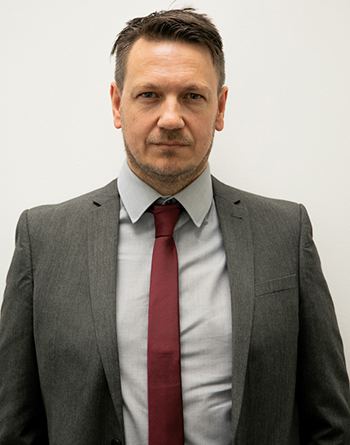3.1 Introducing the police team
The investigation that you will follow involves you working with a team of investigating officers. You have already met SIO Lyndon Harris in the police briefing. As the Senior Investigating Officer, Lyndon is responsible for the senior-level decision making in the case, and the rest of the team will report to him.
The other officers in the case are Detective Sergeant (DS) Lara Sund and Detective Inspector (DI) Jake Bullet. In UK Police Forces ranks are structured as Constable, Sergeant, Inspector, Chief Inspector through to Chief Constable (who leads the force).
DI Jake Bullet
DI Jake Bullet represents the ‘old school’ of policing. He thinks of himself as a highly intuitive police officer who works from gut feel rather than an evidence base. He tends to be domineering in personality, preferring talking to listening. He is highly motivated and enthusiastic, although he is not always a fan of more modern and more ethical policing standards.
DS Lara Sund
DS Lara Sund is much more receptive than her counterpart to the idea of evidence-based policing. Evidence-based policing is the use of approaches to policing that rely on a proven evidence base, rather than following a particular hunch regardless of the supporting evidence. Lara is open minded and curious in her outlook and is happy to listen and learn in her approach to her job. In the next section, you will get to see an interview where Lara demonstrates some of these qualities.
Because this is a fictional case, Lara and Jake will undertake a range of duties that real detectives would not actually do. For example, conducting both witness and suspect interviews (in real life detectives are trained as specialists in one or the other).
Of course, there is a much wider team of police officers involved in the investigation alongside this core team, such as the officers who attend at the scene, the Crime Scenes staff and the staff from the forensic science service, all of whom have a role to play.
There are other ways in which some of our material may differ from real life. For example, because we want you to really concentrate on the psychological communication between particular individuals in this investigation, we haven’t included solicitors and second interviewers in our interviews. More often than not in real police suspect interviews, there are four people in the room: the lead interviewer, the co-interviewer, the suspect and their solicitor. This has been simplified in each interview, so that you will only see interviews with lead interviewers, and with no solicitors present.


